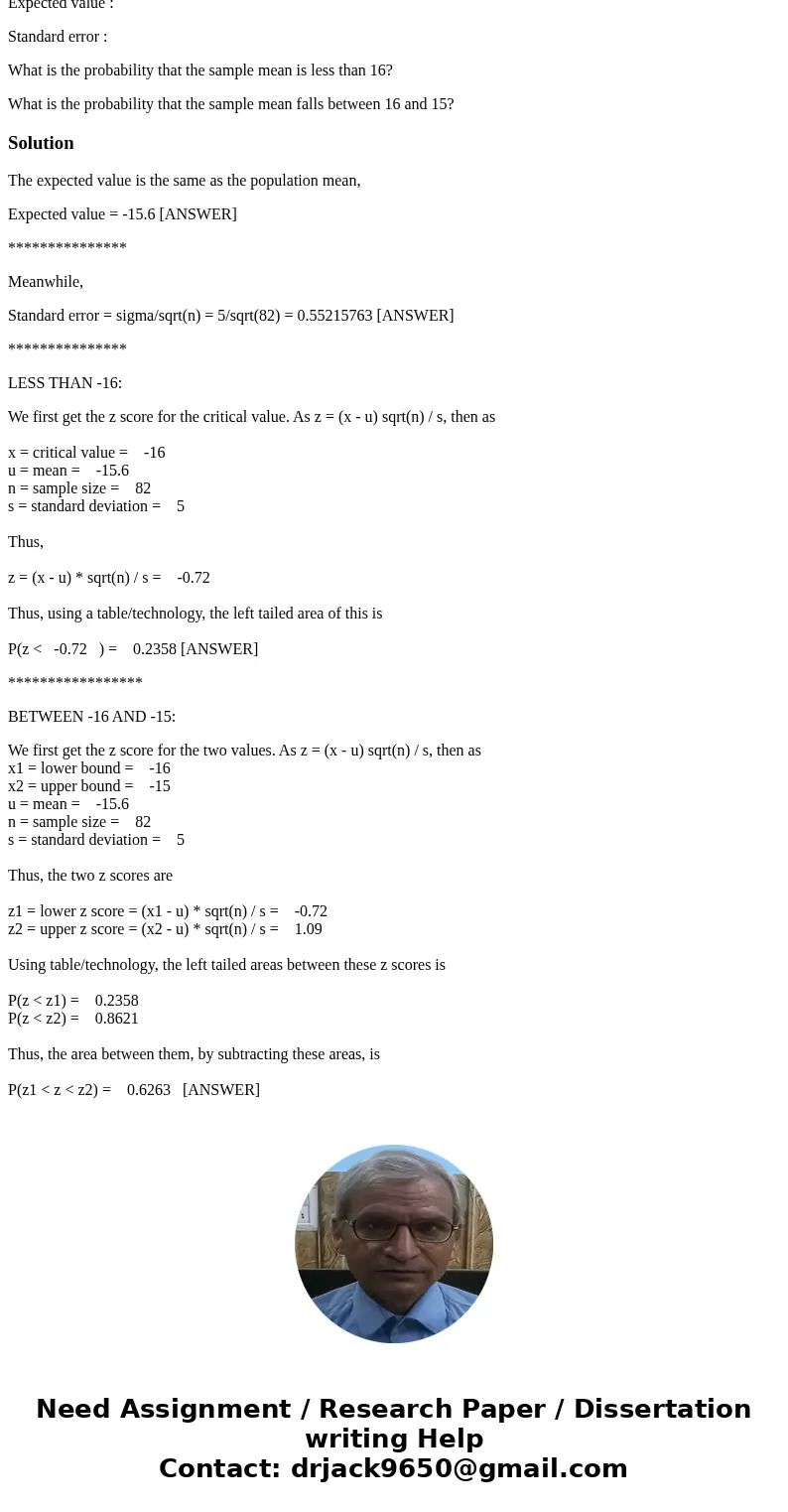A random sample of size n 82 is taken from a population wit
A random sample of size n = 82 is taken from a population with mean = 15.6 and standard deviation = 5 use Z chart
Calculate the expected value and the standard error for the sampling distribution of the sample mean. (Negative values should be indicated by a minus sign. Round \"expected value\" to 1 decimal place and \"standard deviation\" to 4 decimal places.)
Expected value :
Standard error :
What is the probability that the sample mean is less than 16?
What is the probability that the sample mean falls between 16 and 15?
Solution
The expected value is the same as the population mean,
Expected value = -15.6 [ANSWER]
***************
Meanwhile,
Standard error = sigma/sqrt(n) = 5/sqrt(82) = 0.55215763 [ANSWER]
***************
LESS THAN -16:
We first get the z score for the critical value. As z = (x - u) sqrt(n) / s, then as
x = critical value = -16
u = mean = -15.6
n = sample size = 82
s = standard deviation = 5
Thus,
z = (x - u) * sqrt(n) / s = -0.72
Thus, using a table/technology, the left tailed area of this is
P(z < -0.72 ) = 0.2358 [ANSWER]
*****************
BETWEEN -16 AND -15:
We first get the z score for the two values. As z = (x - u) sqrt(n) / s, then as
x1 = lower bound = -16
x2 = upper bound = -15
u = mean = -15.6
n = sample size = 82
s = standard deviation = 5
Thus, the two z scores are
z1 = lower z score = (x1 - u) * sqrt(n) / s = -0.72
z2 = upper z score = (x2 - u) * sqrt(n) / s = 1.09
Using table/technology, the left tailed areas between these z scores is
P(z < z1) = 0.2358
P(z < z2) = 0.8621
Thus, the area between them, by subtracting these areas, is
P(z1 < z < z2) = 0.6263 [ANSWER]


 Homework Sourse
Homework Sourse